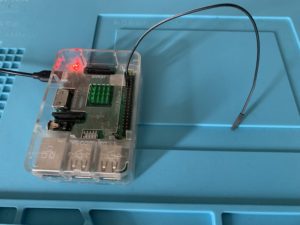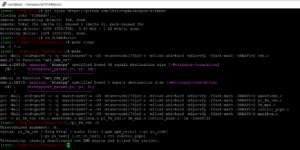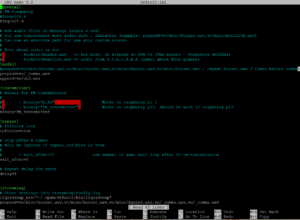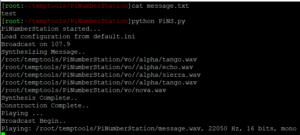In this post we will talk about two fascinating topics and how to combine them: Numbers Station and Raspberry Pi. We’re entering the world of spies!!
Disclaimer: Do not interfere with radio stations in your area – I am not responsible for the misuse of this article, please check the legislation in your country.
Numbers Station remain a great mystery to all. There is speculation about them being used by intelligence agencies in various countries. According to The Conet Project, the first Numbers Station was in World War I and they were very popular during the Cold War.
Over the years many amateur radios (aka ham radio) have pursued and classified these broadcasts. Some of the most famous are:
• Lincolnshire Poacher: believed to have been operated by MI6 and its signal emanated from the island of Cyprus.
• The Spanish Lady: from Cuba.
• Swedish Rhapsody: operated by Polish intelligence.
I recommend you continue reading the links and listen to the broadcasts to learn more about this dark but fascinating world.
The other topic is the use of Raspberry Pi, small computers that I personally use for all kinds of professional and personal projects (red team and blue team). I strongly recommend you to have several of these devices at hand. For my Numbers Station I used a rpi version 3, but it works the same with version 4 or even a Pi Zero.
The material used is as follows:
• Raspberry Pi 3
• Cable to make antenna, put on the GPIO4 Pin.
• As operating system I use Kali Linux, but you can use other options like Raspberry Pi OS (former Raspbian).
Before we go into the detail of the Numbers Station, let’s explore a software that allows us to mount a radio station: Pi-FM-RDS
Pi-FM-RDS
Using Pi-FM-RDS, a Python tool, we can broadcast radio with the Raspberry Pi. The whole process is very simple as we will see below.
The first thing is to download the source code of the project and compile it. In the image below we see the necessary steps.
If everything was correct, now we are ready to mount our radio on Raspberry Pi. The good thing about this program is that it includes support for Radio Data System (RDS), so we can send data such as the name of our station and messages.
For this demo I used one of the sounds, wav files, included in Pi-FM-RDS and with the message “RADIO PIRATE”. I have left the default station name “RASP-Pi” and the default frequency “107.9 MHz”.
PiNumberStation
For the creation of our Numbers Station we will use the PiNumberStation tool (also written in Python) that is quite easy to use.
Download the source code of the project to our Raspberry PI. Please see the following image.
The next thing is to modify the default.ini configuration file to fit our needs. For this test, the only change I have made is to modify the frequency to 107.9 MHz and the rest of parameters I have left them by default. Each parameter is well documented in case we want to make additional changes.
In the message.txt file we include the message we want to issue, numbers and/or words. And all we have left is to run the PiNS.py script.
As the PiNumberStation project itself tells us in the website FreeSound, you’ll find more sound files ready to use.
The following video, available on my YouTube channel, is a number broadcast that includes a small challenge (CTF). Can you break the encrypted message? 😉
THE END
I hope you found this post interesting and encouraging to set up your own Numbers Station, always within the legality 😊
Would you like to see more radio frequency (RF) posts?










Pingback: Your own Numbers Station at Home with a Raspberry Pi and Pi-FM-RDS
Pingback: OTA: New srsLTE, Lime Suite, LuaRadio, GQRX, SDR#, and More – MyriadRF